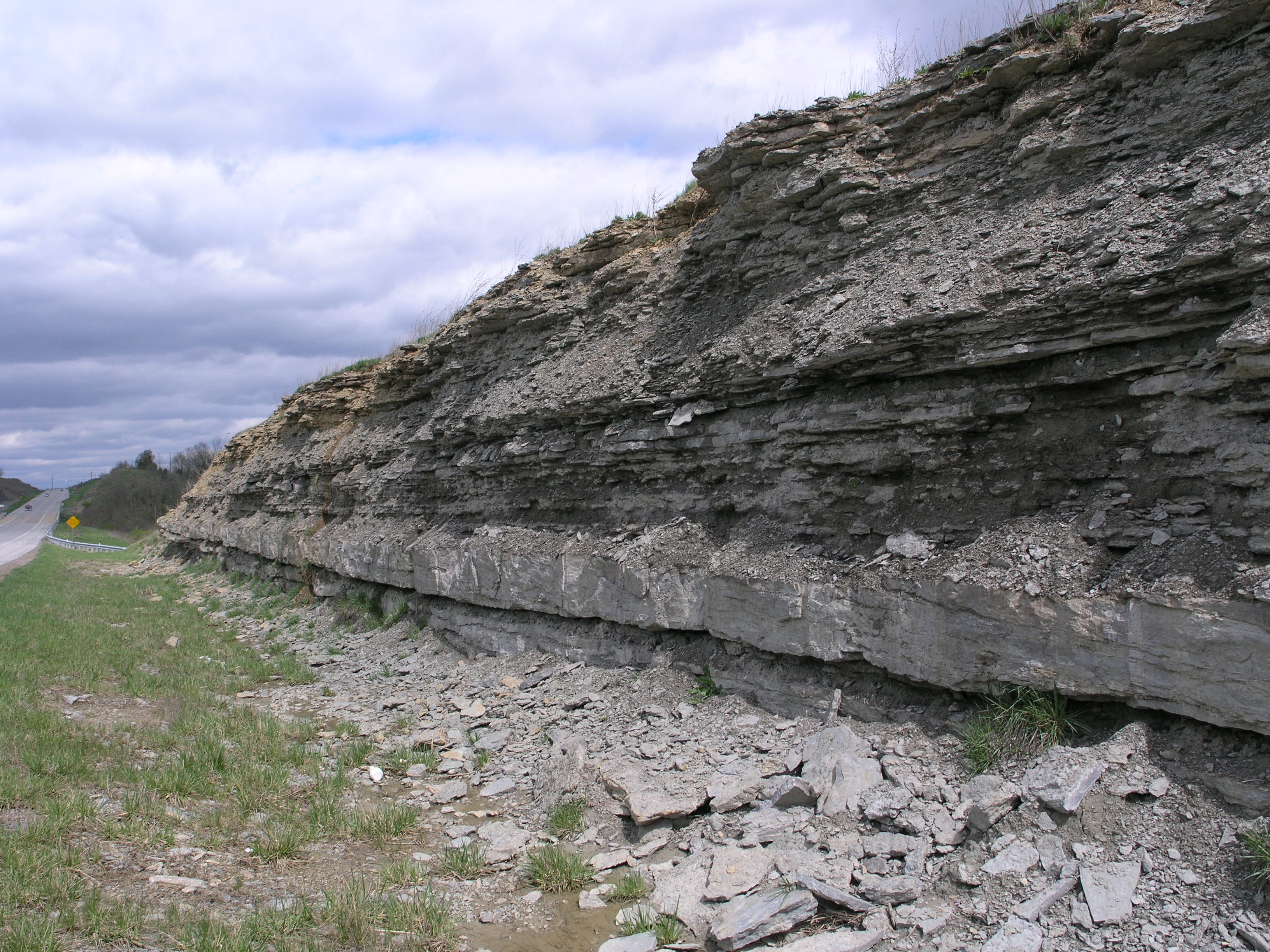
Frasnian species dispersal events. From Stigall, 2010.
The Frasnian-Fammenian “Mass Extinction” was one of the five greatest declines in biodiversity during the Phanerozoic Era. However, the largest contributor to diversity loss was not elevated extinction rate–extinction rates were elevated, but not statistically higher than background–but the dramatic reduction in speciation rate. One of the hallmarks of the Late Devonian was a shift from highly endemic faunas to a cosmopolitan fauna. Development of a cosmopolitan fauna results from widespread species invasions, and thus the Late Devonian can be examined as a partial analog to the invasive species component of the modern biodiversity crises.
The role of invasive species during the Late Devonian Biodiversity Crisis has been characterized using a series of GIS, phylogenetic, biodiversity, and paleoecological analyses. The primary impact of species invasions is to reduce the abilty for populations to persist in isolation, which thereby reduces (or in this case nearly eliminates) allopatric speciation by vicariance.
Representative publications:
Stigall, A.L. In press (Spring 2016). Invasive species and speciation. In Allmon, W. and Yaccobucci, M.M., Species in the Fossil Record. Chicago University Press.
Stigall, A.L. 2015. Expanding the role of biogeography and niche evolution in macroevolutionary theory, 301-327. InSerrelli, E. & Gontier, N. (eds), Macroevolution: Explanation, Interpretation, and Evidence. Springer: Interdisciplinary Evolution Research series. Online
Stigall, A.L. 2013. Analyzing links between biogeography, niche stability, and speciation: The impact of complex feedbacks on macroevolutionary patterns. Palaeontology, 56(6): 1225-1238. Online
Stigall, A.L. 2012. Speciation collapse and invasive species dynamics during the Late Devonian “Mass Extinction” GSA Today, 22(1): 4-10. Online
Stigall, A.L. 2011. Integrating GIS and phylogenetic biogeography to assess species-level biogeographic patterns: A case study of Late Devonian faunal dynamics, p. 113-140. In P. Upchurch, A. McGowan, and C. Slater, (eds.), Palaeogeography and Palaeobiogeography: Biodiversity in Space and Time. CRC Press, London. Open Access
Stigall, A.L. 2010. Invasive species and biodiversity crises: Testing the link in the Late Devonian. PLoS ONE, 5(12): e15584.Open Access
Stigall, A.L. & Lieberman, B.S. 2006. Quantitative Paleobiogeography: GIS, Phylogenetic Biogeographic Analysis, and Conservation Insights. Journal of Biogeography, 33 (12): 2051-2060. Online
Stigall Rode, A.L. 2005. The application of Geographic Information Systems to paleobiogeography: Implications for the study of invasions and mass extinctions. The Paleontological Society Papers, 11: 77-88. PDF
Stigall Rode, A.L. & Lieberman, B.S. 2005. Using environmental niche modelling to study the Late Devonian biodiversity crisis, p. 93-180. In D. J. Over, J. R. Morrow & P.B. Wignall (eds.), Understanding Late Devonian and Permian-Triassic Biotic and Climatic Events: Towards an Integrated Approach. Developments in Palaeontology and Stratigraphy, Elsevier, Amsterdam. PDF
Stigall Rode, A.L. & Lieberman, B.S. 2005. Paleobiogeographic patterns in the Middle and Late Devonian emphasizing Laurentia. Palaeogeography, Palaeoclimatology, Palaeoecology, 222 (3-4): 272-284. Online
Rode, A.L. & Lieberman, B.S. 2004. Using GIS to unlock the interactions between biogeography, environment, and evolution in Middle and Late Devonian brachiopods and bivalves. Palaeogeography, Palaeoclimatology, Palaeogeography, 211(3-4): 345-359. Online
This research has been supported by grants from the National Science Foundation, American Chemical Society’s Petroleum Research Fund, and Ohio University.




